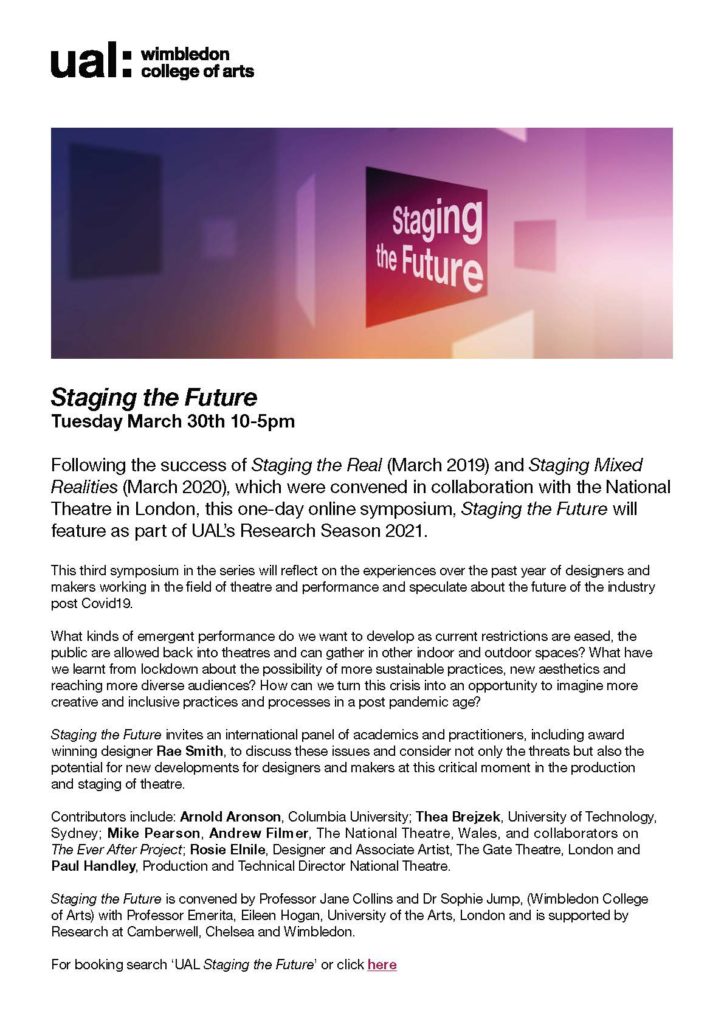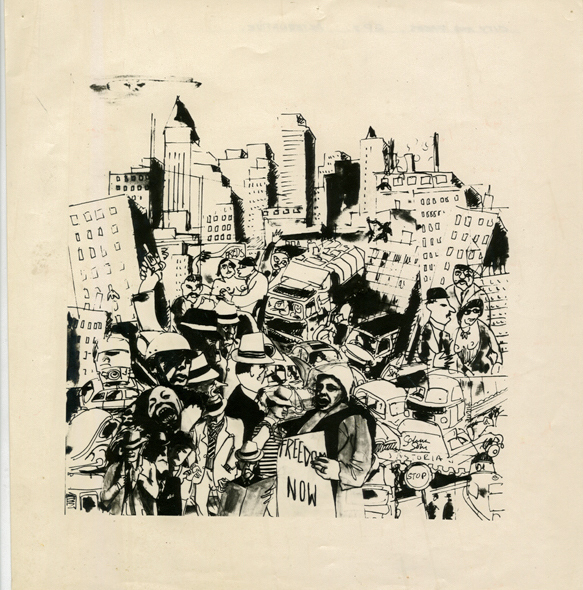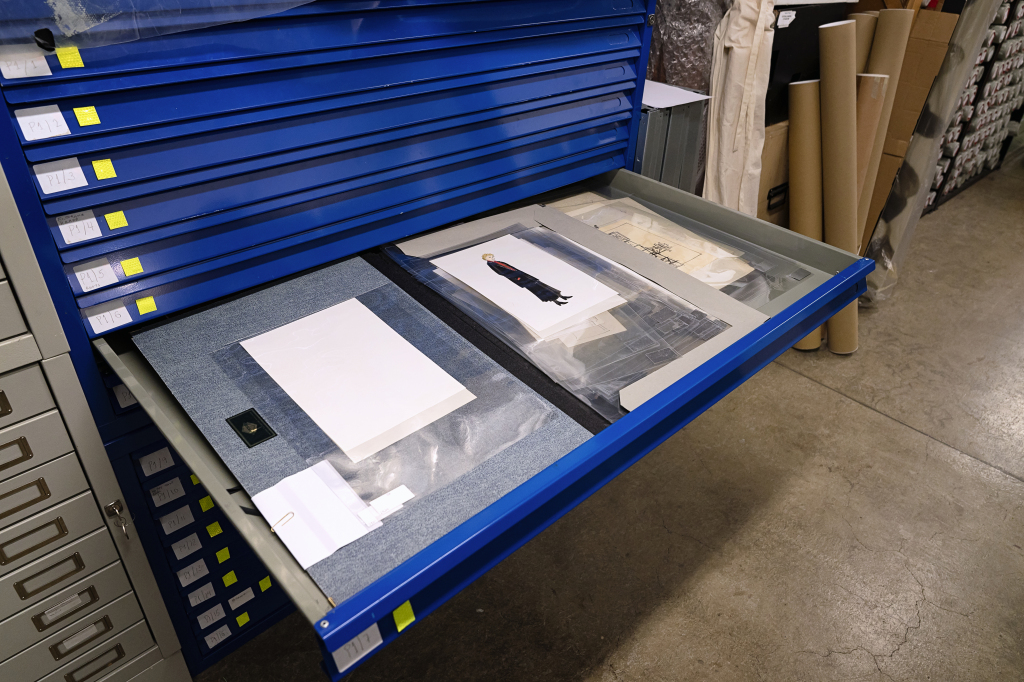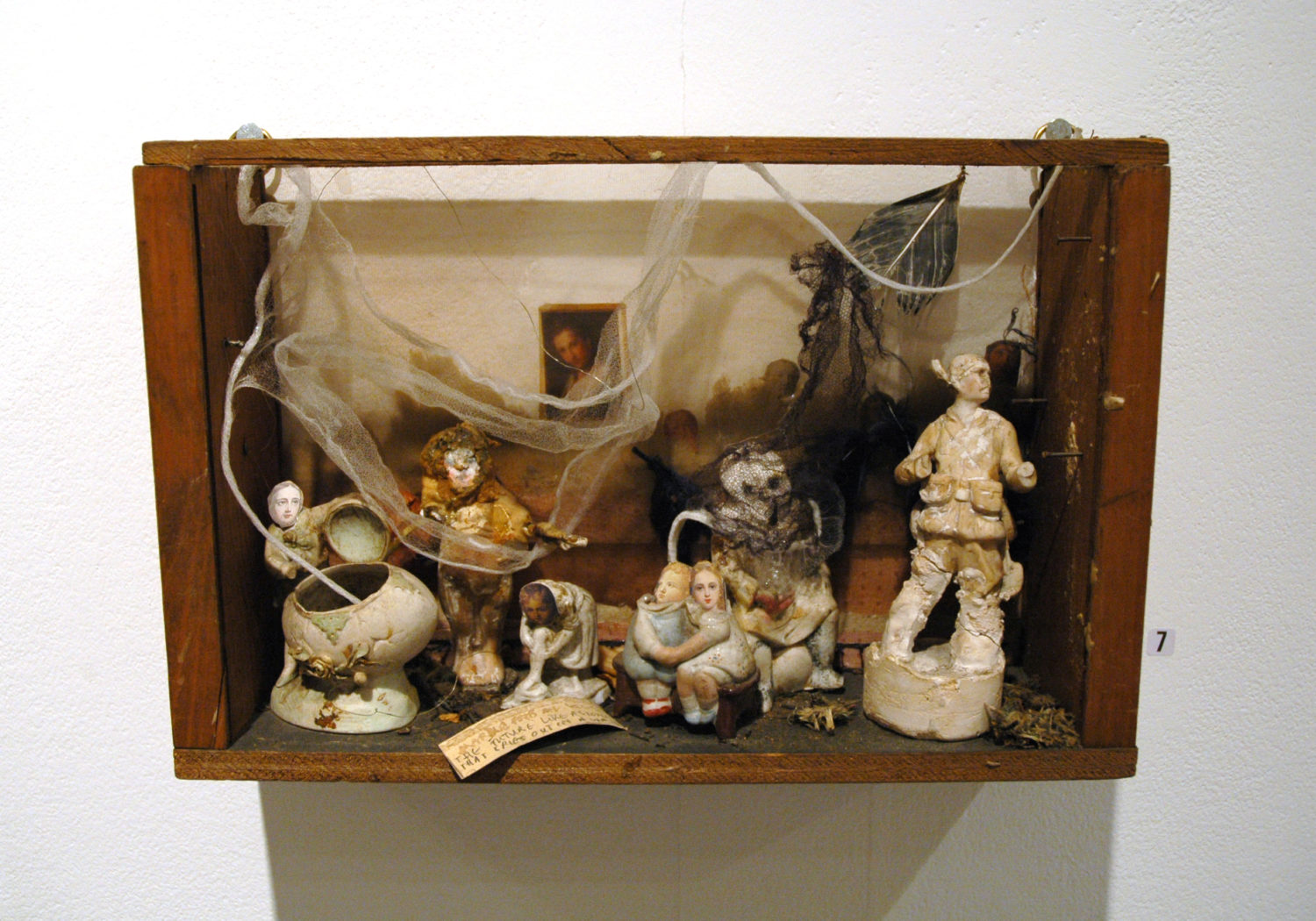Staging the Future Online Symposium – Tuesday 30th March 2021. BOOK HERE

UAL Theatre Design BA Jocelyn Herbert Archive Project
‘Onstage to Webpage: A digital collaboration’ – National Theatre and University of the Arts London 2020-2021
The National Theatre Archive exists to document, preserve and make accessible the history of the National Theatre and its ongoing activities. Within our external collections, we hold the archive of Jocelyn Herbert, one of the 20th Century’s most influential theatre designers. The collection comprises over 6,000 of Herbert’s costume and set design drawings for venues including the National Theatre, Royal Court Theatre and the Metropolitan Opera as well as sketchbooks, diaries, photograph albums and physical items including masks and model boxes.

We, at the NT Archive, developed an academic partnership with University of the Arts London in 2014 when the Jocelyn Herbert collection was transferred to the NT from Wimbledon College of Arts. Over the past seven years, three post-doctoral fellows have worked between the NT and UAL and we have hosted many cohorts of students from Chelsea’s MA Curating and Collections, Camberwell’s MA Curation and Wimbledon’s BA Theatre Design. It is the latter that we will focus on in this blog post. All of these initiatives have aimed to open up the collection to people who may not otherwise engage with it and specifically to use it to educate and inspire the next generation of theatre designers. A beneficial side effect has been that design students are now questioning how they archive their own work and reflecting on how they store and label their creations.
Traditionally, the BA Theatre Design collaboration involves students visiting the NT Archive and being introduced to the work of Jocelyn Herbert, her collection and the role of archives in facilitating research and inspiring creativity. During this induction, all of the speakers, each tackling a different aspect of the project, select a few records to share with the students on a specific theme. In previous years, the themes have been around staging the real or mixed realities. The students are divided into groups and select one of the sets of records, which the speakers identified. These records are usually a mix of drawings, notebooks, diaries and photographs relating to a particular production. The students, with the very broad brief of ‘respond’ and to each create a new item, subsequently create a piece of work which is presented to the rest of the class at the end of the two week period.

The Covid-19 pandemic required us to alter our usual plans. As students were unable to visit the NT Archive in person in 2020, we wanted to do our best to take Jocelyn’s work to them. UAL organised for all of the induction sessions to be done over Zoom or using filmed versions of the previous year’s project. The project was also extended from two to three weeks so that the students had time to get to grips with the materials and rewatch the introductory content. We uploaded digitised content to a shared dropbox folder to which the students had access for a designated period of time. In the archive induction, students were introduced to the concept of an archive and how to use digital materials. The topics of copyright and crediting materials were also covered.
The final student presentations were all delivered over Zoom and took the format of a film, which included footage of the new items each student had created. This film was presented alongside a ‘live’ explanation by the group about their approach. The standard of work was the same if not better than previous years and there were a few points for us as Archivists to learn from this process. The students particularly enjoyed having access to digital content at hours when it suited them, rather than having to schedule appointments during repository opening hours. The downside of this, however, was that students did not get experience of using an archive catalogue and interacting with archive staff. They also could not experience and benefit from the serendipity of researching in an archive as they were limited to using content that had been digitised previously.
It was noted that the digital approach to collaboration seemed to come naturally to the students, which is testament to the volume of digital interactions they are required to have at present. When we have the in-person presentations, the students gain the experience of pitching a project or idea, which is something that they will frequently be required to do in their career but the presentation of their film provided a similar experience for them.

After a debrief session with the course leaders, it has been decided that the project should continue in a hybrid fashion as there were distinct benefits from having the digital form: students could rewatch the introductory videos, they could access materials 24 hours a day and collaborate within their teams more easily online. But there are definite benefits to a physical aspect of the project: students get hands-on experience with Jocelyn’s work which digitised images cannot replicate, they can explore what it is like to research and work in an archive and practice in-person presentations in front of their peers and assessors. Hopefully the NT Archive will have reopened by the time the project runs in Autumn 2021 and we can trial this hybrid model. We are very grateful to have had the opportunity to pilot a digital-only version of the project in 2020 as it was something that we had previously discussed but not had the opportunity to do. Now, we can consider whether we may be able to take this format out to courses who cannot make the trip to the London research room and to share Jocelyn’s work with a much wider group of students.
Jocelyn Herbert Post Doctoral Fellowship at the University of the Arts London and the National Theatre

The Jocelyn Herbert Post Doctoral Fellowship at the University of the Arts London and the National Theatre has been created to develop and undertake an agreed post-doctoral project which is centred on research into the Jocelyn Herbert Archive.
The first Jocelyn Herbert Fellow, Eleanor Margolies, looked at the importance of scale models in Jocelyn Herbert’s practice, and at her participation in discussions about the design of the Oliver Theatre as a member of the National Theatre Building Committee in the 1960s. She created ‘Playing with Scale’, a major new exhibition at the National Theatre that ran from November 2018 to May 2019 on how theatre designers use set models. https://fromthejocelynherbertarchive.com/
The main output of 2018 Fellow Matthew McFrederick‘s Fellowship was the Staging the Real Theatre Design symposium at the National Theatre, which explored historic and contemporary approaches to presenting the real or realisms in theatre and performance. As well as convening the symposium with Professor Eileen Hogan and Professor Jane Collins, Matthew delivered his paper, ‘Designing the Real: Jocelyn Herbert’s Poetic Realism’, alongside the symposium’s leading speakers: Alex Eales, Polly Teale, Arnold Aronson, Pamela Howard and Roy Williams. To view all the talks from Staging the Real, please visit: https://tinyurl.com/ybjh5too
2018 Fellow Sophie Jump created an interactive website, ‘The Role of the Theatre Designer’ for the National Theatre. It demonstrates the crucial role of theatre designers as collaborators in the making of performance. It offers insight into the processes and methodologies of performance design and how designers contribute dramaturgically to productions. www.tinyurl.com/theatredesigner
To view resources pages for ‘The Oresteia’ click here – https://www.jocelynherbert.org/resources/the-oresteia-resources/
These pages give a glimpse into what is available in the Jocelyn Herbert Archive, how to use what is there and where else to find information about Jocelyn Herbert or productions she designed. All of the digitised images that Jocelyn Herbert created for the 1981 National Theatre production of The Oresteia are viewable, and there are ideas about ways to use these resources, as well as further resources to explore.